Mastering Net User: Reset Your Windows 10 and 11 Password Like a Pro
- Home
- Support
- Tips System Rescue
- Mastering Net User: Reset Your Windows 10 and 11 Password Like a Pro
Summary
Forgot your Windows password? No problem. Learn how to reset it like a pro with Net User. This comprehensive guide covers everything from understanding the command to avoiding common pitfalls. Say goodbye to locked accounts and hello to easy password changes in Windows 10 and 11.
Table of contents
net user command. The following chapter delves into this command’s syntax and parameters, empowering you to confidently update your password. Let’s begin mastering the net user command.net user command is the backbone of user account operations within Windows Command Prompt. By mastering this command, users gain the ability to manage account specifics with ease and expertise. This command follows a structured syntax:net user [username] [password | *] [options] [/domain]
[username] represents the target account, [password | *] allows setting or changing a password, and [options] specify the actions and modifications to be applied, with [/domain] extending these operations to domain accounts.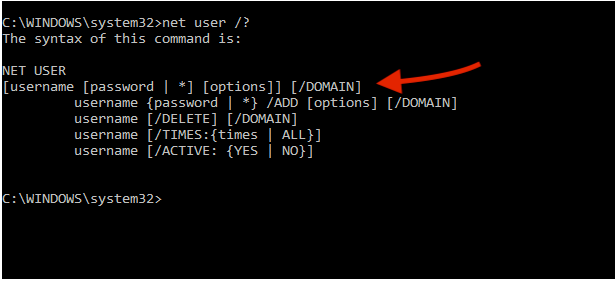
/add
/delete
/active:yes|no
/expire
/times
/fullname:"Full Name", /homedir:path, and /scriptpath:script detail a user’s full name, establish home directory paths, and designate logon scripts, respectively. The /passwordchg and /passwordreq options dictate password change permissions and requirements, enhancing security protocols./usercomment:"comment" to annotate accounts or /workstations to limit logon stations. These tailored commands, when properly executed, reinforce an admin’s capacity to fortify user account configurations and enforce policy compliance.Start by downloading Renee PassNow from the official website and install it on a different computer that you can access. You can choose the appropriate version based on your computer’s operating system.

Remove Windows Login Password 3 steps for whole password remove process.
Recover the files Recover the deleted files without Windows system.
Transfer the data Transfer the important files of the computer with system.
Fix Windows startup error Fix various Windows startup failures or crashes.
Erase disk Completely erase disk files which will not be restored.
Remove Windows Login Password 3 steps for whole password remove process.
Recover the files Recover the deleted files without Windows system.
Transfer the data Transfer the important files of the computer with system.
Launch Renee PassNow and insert a USB flash drive or blank CD/DVD into the computer. Select the option to create a bootable media. Follow the on-screen instructions to complete the process.
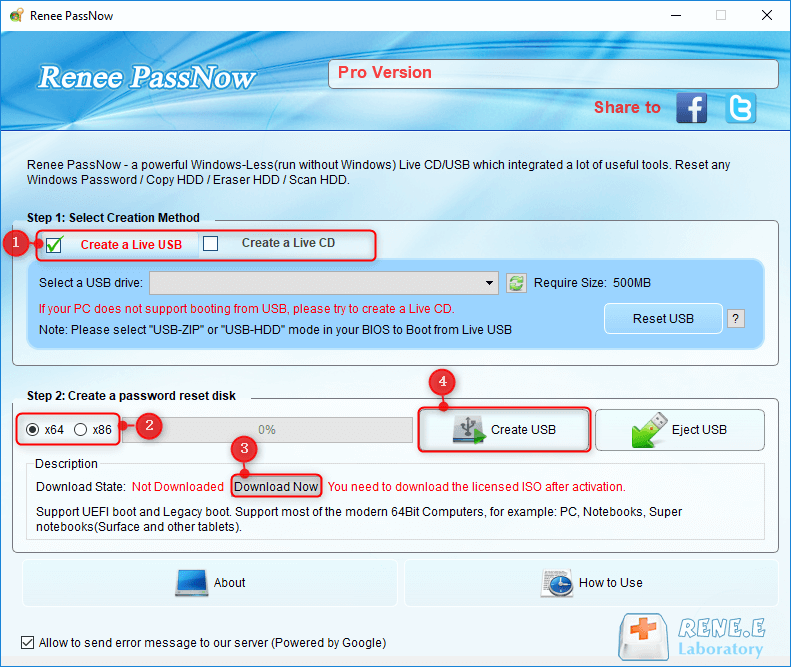
Insert the bootable USB or CD/DVD into the locked Windows computer. Restart the computer and enter the BIOS settings by pressing the appropriate key (usually F2 or Delete). Configure the boot order to prioritize the bootable media.
| Server Type | Enter boot menu method |
|---|---|
| DELL | Press the F12 key repeatedly before the Dell logo appears on the screen. |
| HP | Press the F9 key multiple times when the HP logo is displayed. |
| BIOS Name | Enter boot menu method |
|---|---|
| ASRock | DEL or F2 |
| ASUS | DEL or F2 for PCs, DEL or F2 for Motherboards |
| Acer | DEL or F2 |
| Dell | F12 or F2 |
| ECS | DEL |
| Gigabyte / Aorus | DEL or F2 |
| Lenovo (Consumer Laptops) | F2 or Fn + F2 |
| Lenovo (Desktops) | F1 |
| Lenovo (ThinkPads) | Enter then F1 |
| MSI | DEL |
| Microsoft Surface Tablets | Press and hold Power and Volume Up buttons |
| Origin PC | F2 |
| Samsung | F2 |
| Toshiba | F2 |
| Zotac | DEL |
| HP | Esc, F9 for "Boot Menu", Esc, F10, Storage tab, Boot Order, Legacy Boot Sources |
| INTEL | F10 |

After successfully booting from the bootable media, Renee PassNow will load. Select “PassNow!” function after booting from the new created Windows password reset disk.
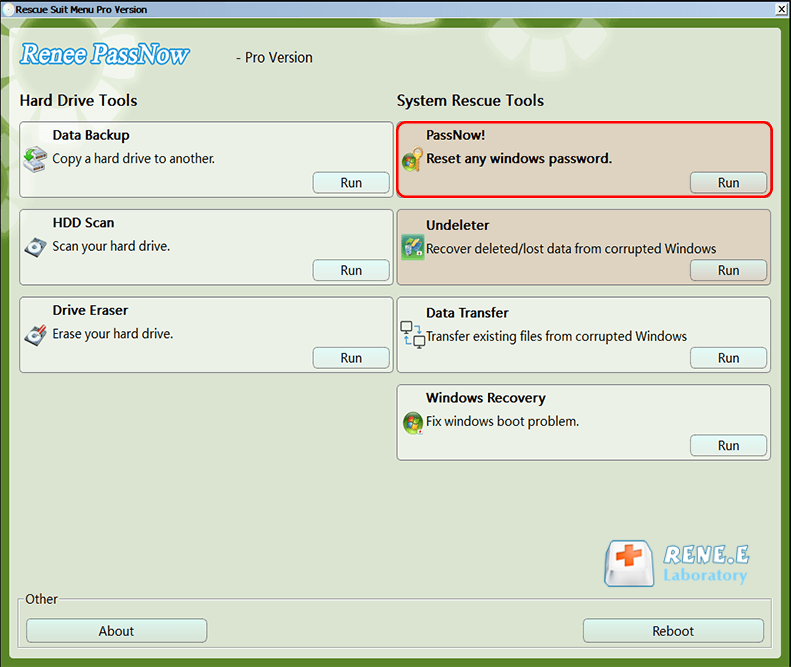
Choose the user account for which you want to reset the password. Then, click on the “Clear Password” button. Renee PassNow will remove or reset the password for the selected user account.
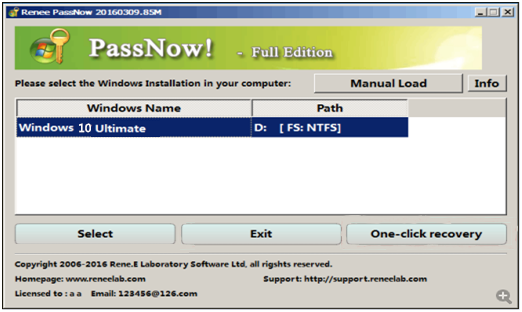
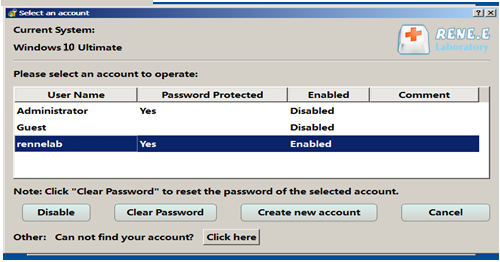
Once the password is reset, remove the bootable media from the PC and restart the computer. You will now be able to log in to Windows Account without a password.
| Windows Version | Download Link | Requirement |
|---|---|---|
| Windows 7 | https://learn.microsoft.com/lifecycle/products/windows-7 | PC with a working Internet connection, a blank USB flash drive or DVD with at least 8 GB of available storage space, a product key |
| Windows 8/8.1 | https://www.microsoft.com/software-download/windows8 | Same to above |
| Windows 10 | https://www.microsoft.com/software-download/windows10 | Same to above |
| Windows 11 | https://www.microsoft.com/software-download/windows11 | Same to above |
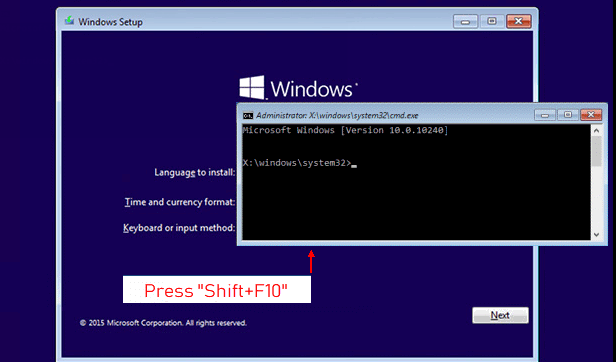
net user [username] [new_password]
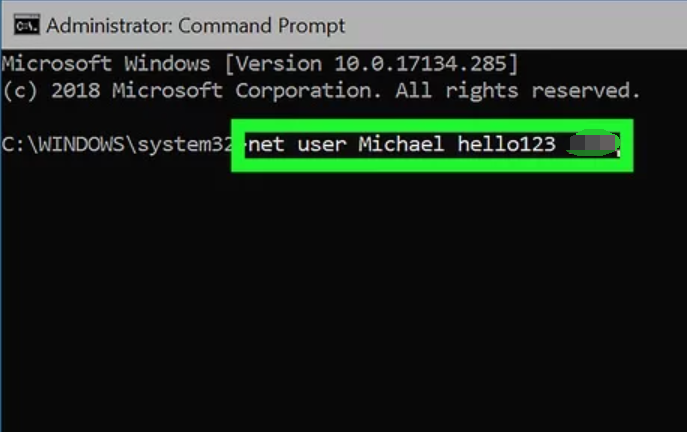
net help user for detailed information or net user /? for basic syntax help.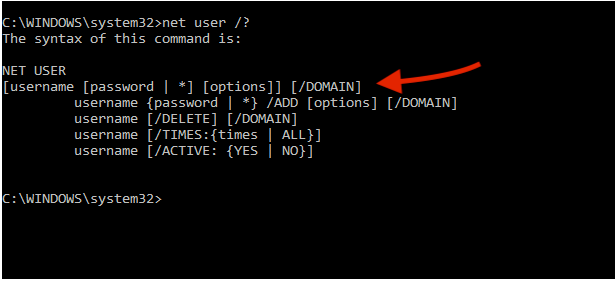
/active:{yes | no}
/fullname:"name"
/times:[timeframe | all]
/times:M-F,9am-5pm
/usercomment:"text"
/workstations:{computername[,.] | *}
net user [username] * /domain
net user [username] [new_password] /domain
wmic /node:"IP_address_of_any_machine_in_target_domain" /user:"the_other_domain\any_domain_admin_account" process call create "cmd /c "net user [username] [new_password] /domain""
/passwordchg:{yes | no} specifies whether users can change their own password, and /passwordreq:{yes | no} determines whether a user account must have a password. Other parameters like /expires:[date], /fullname:"[name]", and /usercomment:"[comment]" allow setting expiration dates, full names, and user comments for accounts, respectively. These options provide further control over the user accounts in a domain environment.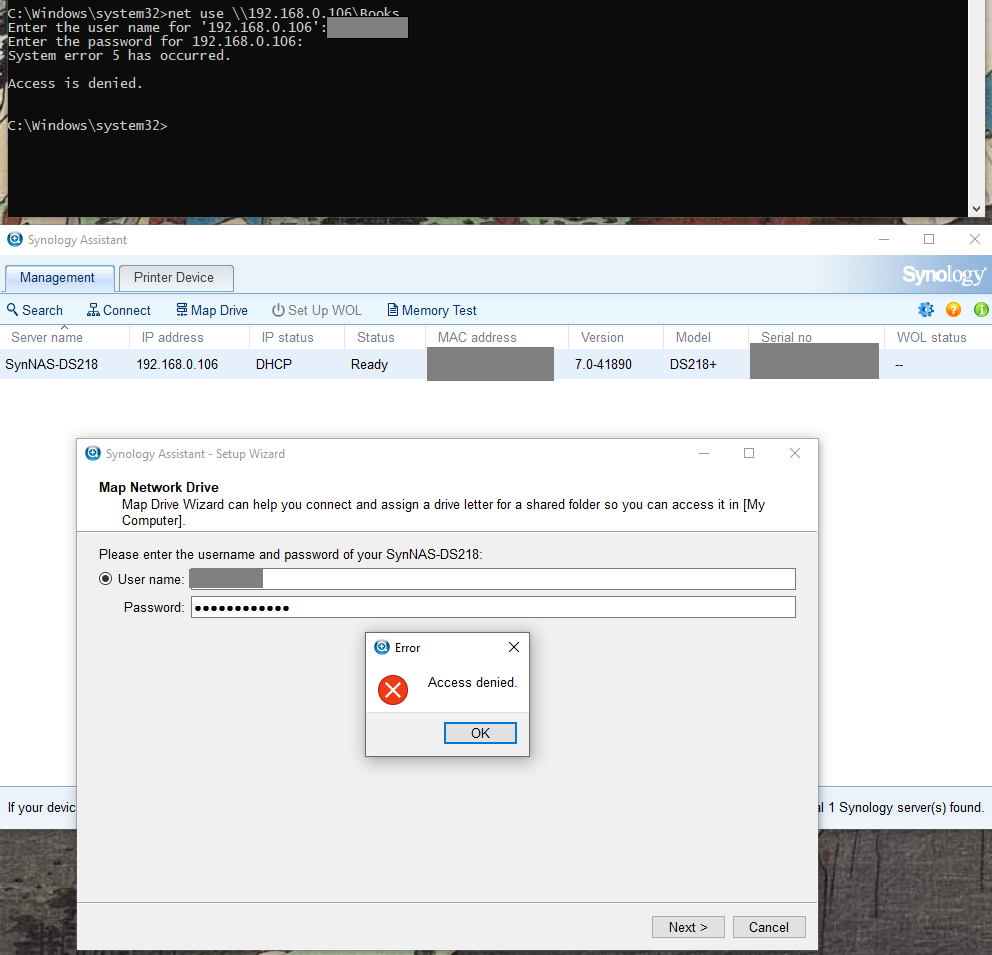
cmd.
Relate Links :
Resetting a Locked iPhone X Without a Password or Computer: A Comprehensive Guide
21-12-2023
Jennifer Thatcher : Forget the hassle of resetting your iPhone X with a password or computer. This article provides step-by-step methods...
How to Factory Reset an iPhone 6 Without Password or Computer
19-12-2023
Ashley S. Miller : Learn how to factory reset your iPhone 6 without a password or computer using various methods like iCloud,...
Unlocking Your iPhone: How to Factory Reset iPhone 7 without Password or Computer
19-12-2023
Ashley S. Miller : Learn how to factory reset your iPhone 7 without password or computer with these easy methods, including using...
How to Factory Reset iPhone 12 without Password: A Comprehensive Guide
19-12-2023
Amanda J. Brook : Learn how to factory reset iPhone 12 without password through different methods such as using third-party software, iCloud,...
- Understanding the Syntax and Parameters of the Net User Command
- Extra: Resetting Your Windows Password with Renee PassNow
- Accessing the Windows Command Prompt When forgot password
- Type 1 : Resetting Local User Account Passwords with Net User
- Type 2 : Resetting Passwords for Domain Accounts using Net User Command
- Addressing Access Denied errors when changing passwords with net user
- Tips for Preventing Forgotten Passwords and Securing Your Windows Account
- Conclusion




